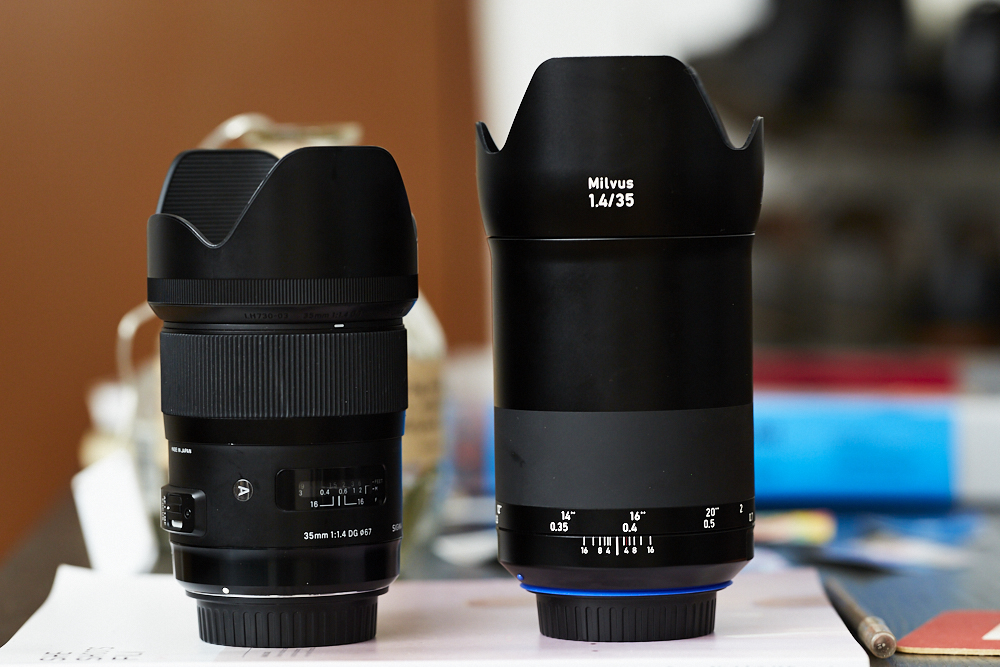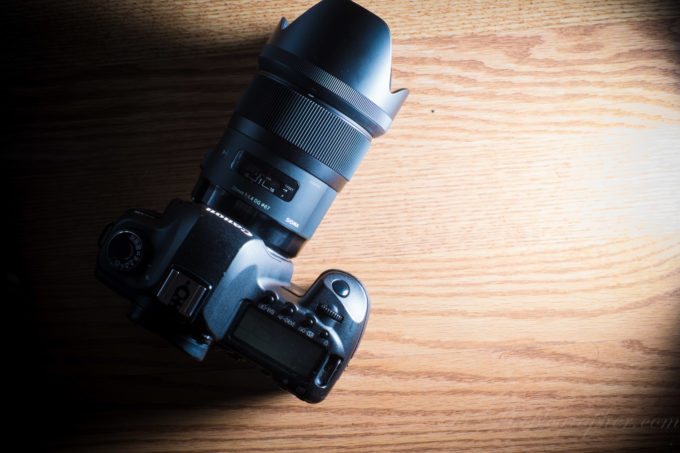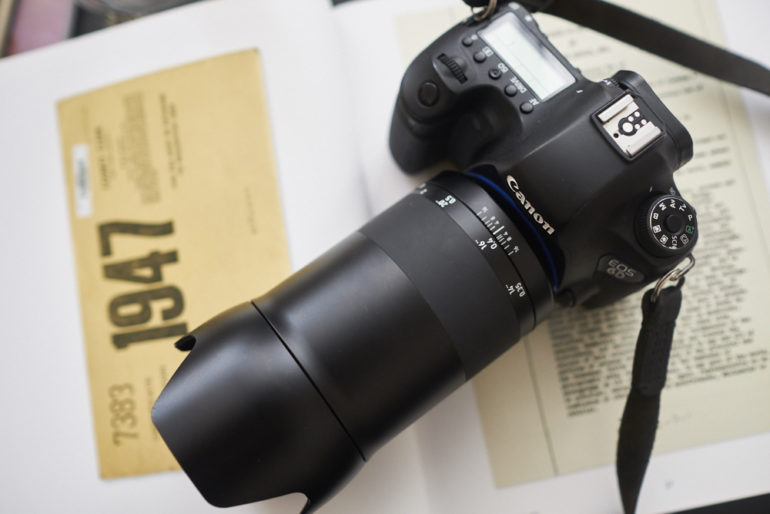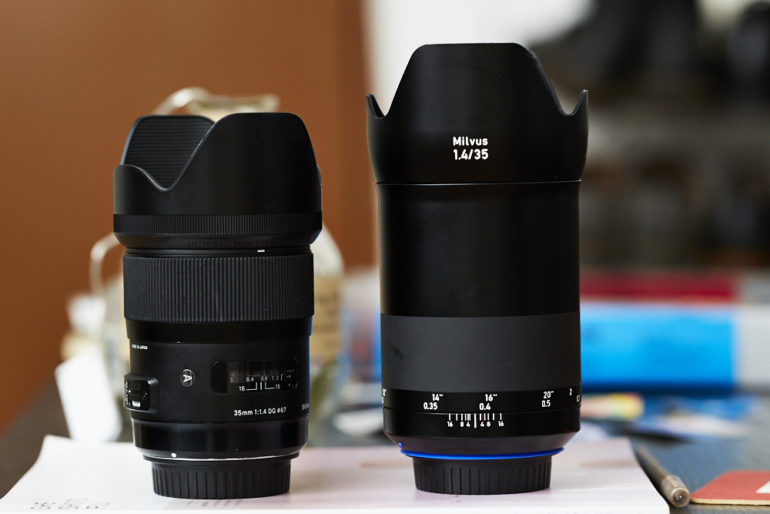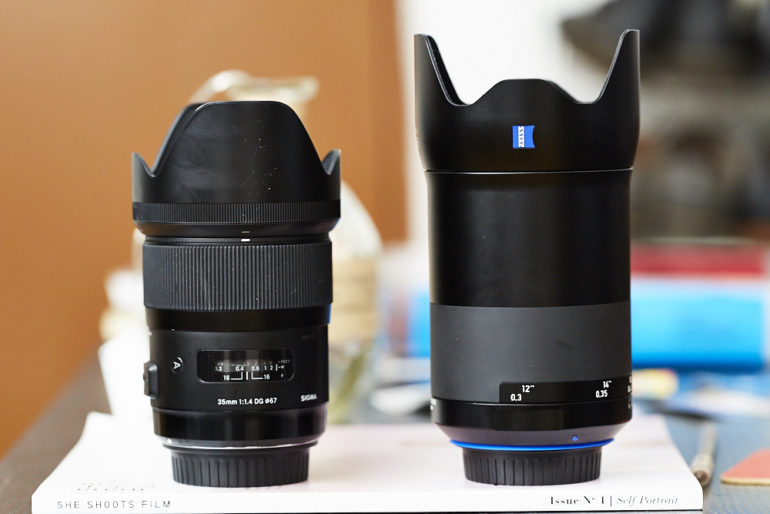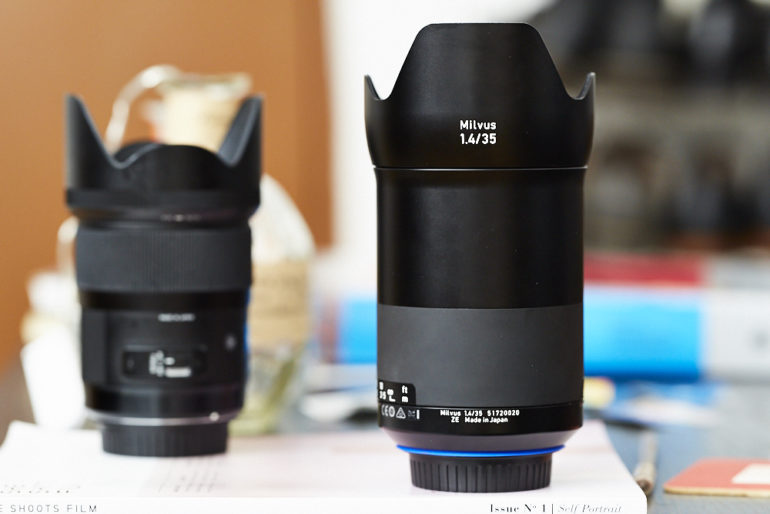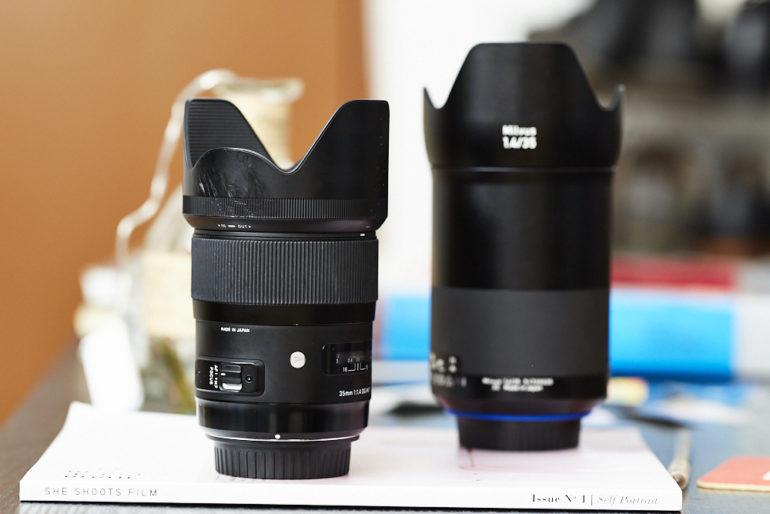When considering the Sigma 35mm f1.4 Art vs Zeiss 35mm f1.4 Milvus lenses, it can be tough to figure out which one is right for you. They both differ pretty greatly when it comes to usage, price point, features, and quality. In fact, it’s only obvious that there’s going to be differences considering that they’re years apart from one another. Lots of photographers out there in the world don’t reach for the higher fruit that Zeiss offers, but then there are also photographers who understand the quality that a Zeiss lens can give them. However, Sigma lenses are oftentimes simply more practical.
So let’s just dive right into this.
Our Reviews
Also be sure to consider our comparison of the Sigma vs the Canon 35mm f1.4 L II, vs Tamron, vs Nikon, and Vs Rokinon.
Gear Used
This informal test was done with the Canon 6D, Adorama Flashpoint Zoom Lion, Sigma 35mm f1.4 Art, and the Zeiss 35mm f1.4 Milvus lens. Stability was provided by the COKIN Riviera Tripod.
Sigma 35mm f1.4 Art vs Zeiss 35mm f1.4 Milvus Comparison Tech Specs
Sigma 35mm f1.4 Art
- Aperture Range: f/1.4-16
- Hyper Sonic Motor (HSM)
- Floating Internal Focus System
- Minimum Focusing Distance: 11.8″
- Anti-Flare Super Multi-Layer Coating
- Special & “F” Low Dispersion Elements
- Front Filter Thread Diameter: 67mm
- 9x Circular Aperture Blades
- Compatible with Sigma USB Dock
Zeiss 35mm f1.4 Milvus
- EF-Mount Lens/Full-Frame Format
- Aperture Range: f/1.4 to f/16
- One Aspherical Element
- Five Low Dispersion Elements
- Zeiss T* Anti-Reflective Coating
- Manual Focus Design
- Anodized Metal Barrel, Rubber Focus Ring
- Weather-Sealed Construction
- Rounded 9-Blade Diaphragm
Ergonomics
Ergonomically speaking, both of these lenses are pretty different. You see, the Zeiss has an effective and working depth of field scale. The Zeiss 35mm f1.4 Milvus is also considerably larger and heavier for great reasons. The Sigma 35mm f1.4 Art on the other hand is an autofocus lens. So its focusing ring is far smaller and it has an AF/MF switch on the side of the lens. The depth of field scale and distance scale is far smaller.
Sigma 35mm f1.4 Art vs Zeiss 35mm f1.4 Milvus Comparison Build Quality
The Zeiss 35mm f1.4 Milvus lens has both weather sealing and a metal body. The majority of this body is dominated by smooth metal with a fair amount of the focusing ring being made out of a smooth rubber. For years, I’ve really wished that Zeiss would add some more texture or groove to the rubber to make the lens easier to hold. Still though, considering that the body is made from metal, I’m sure that you’d be fine with it taking a few dings. The blue ring on the bottom is just a bit of the weather sealing that the Zeiss 35mm f1.4 Milvus lens offers.
The Sigma 35mm f1.4 Art on the other hand is made of a plastic material that is designed to feel like metal. The focusing ring has the grooves that I wish that the Zeiss had. This lens doesn’t have any sort of weather sealing, so be careful with it.
Sigma 35mm f1.4 Art vs Zeiss 35mm f1.4 Milvus Comparison Ease of Use
Arguably, the Sigma 35mm f1.4 Art is far easier to use for most people. It’s an autofocus lens so you’re just pointing and shooting. On the other hand, the Zeiss 35mm f1.4 Milvus has a very effective depth of field scale that lets you pre-focus and zone focus when shooting things like landscapes and street photography. This lens is specifically being marketed at portrait photographers though. So with that said, you can rest assured that the manual focus efforts that you’re going to put into working with the Zeiss 35mm f1.4 Milvus will mean that you actually get better photos simply because you’re going to pay attention to more in your scene.
Autofocus
The Sigma 35mm f1.4 Art has autofocus that is fast and accurate providing that you’ve micro-adjusted or AF fine tuned the lens. The Zeiss is a manual focus optic. It has focus confirmation with both Canon and Nikon DSLRs, so you’ll need to use the Nikon rangefinder system or Canon’s AF system to get your perfect focus.
Image Quality: Sigma 35mm f1.4 Art vs Zeiss 35mm f1.4 Milvus Comparison

This test was done with the Canon 6D set down on a COKIN RIVIERA tripod and the Adorama Flashpoint Zoom Lion flash set manually. The camera’s settings were 1/60th, f4 and ISO 100. The white balance was locked to Daylight. There is a slightly different field of view due to the Sigma lens being a bit shorter.

In my opinion, the Zeiss is quite a bit sharper. The bokeh is also just slightly better with the Zeiss. Considering that the white balance was locked here and a flash was added to the scene, it’s pretty hard to tell the difference between the two when it comes to color rendition.


